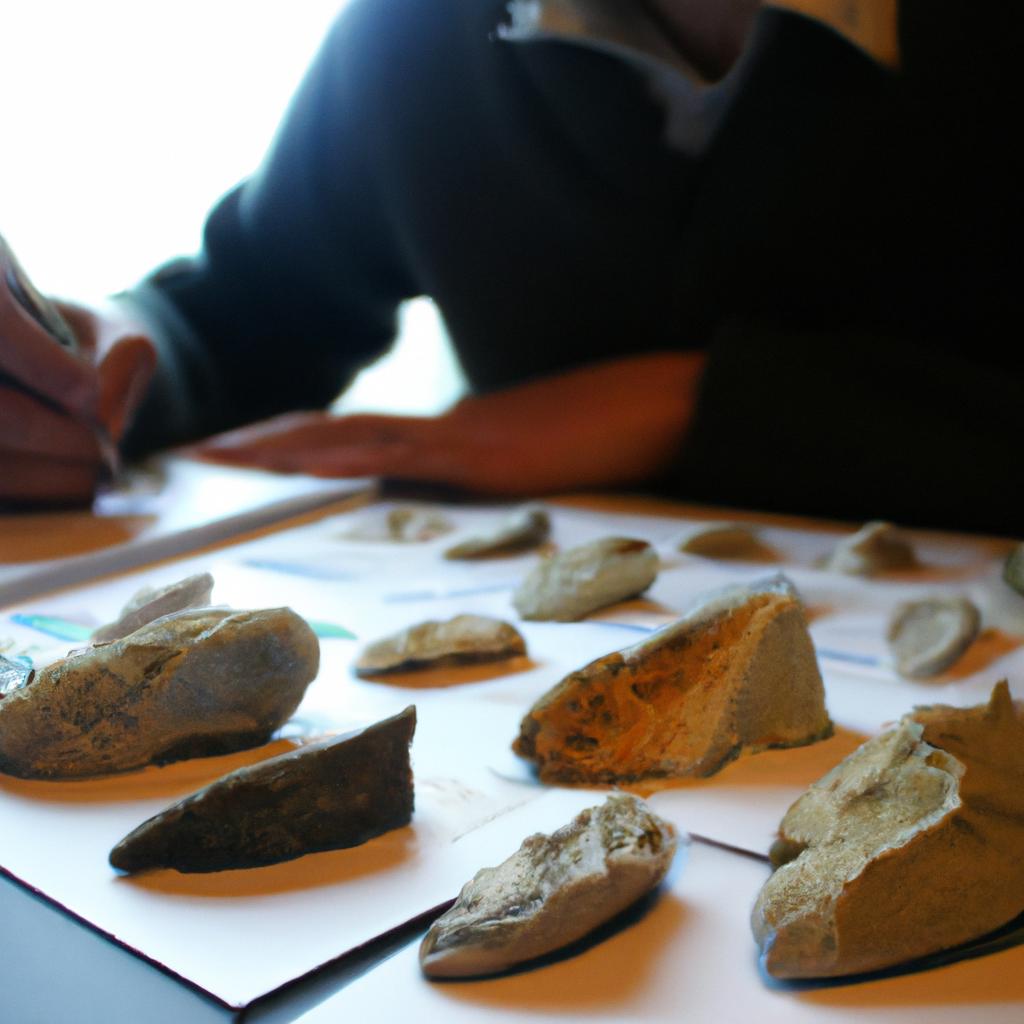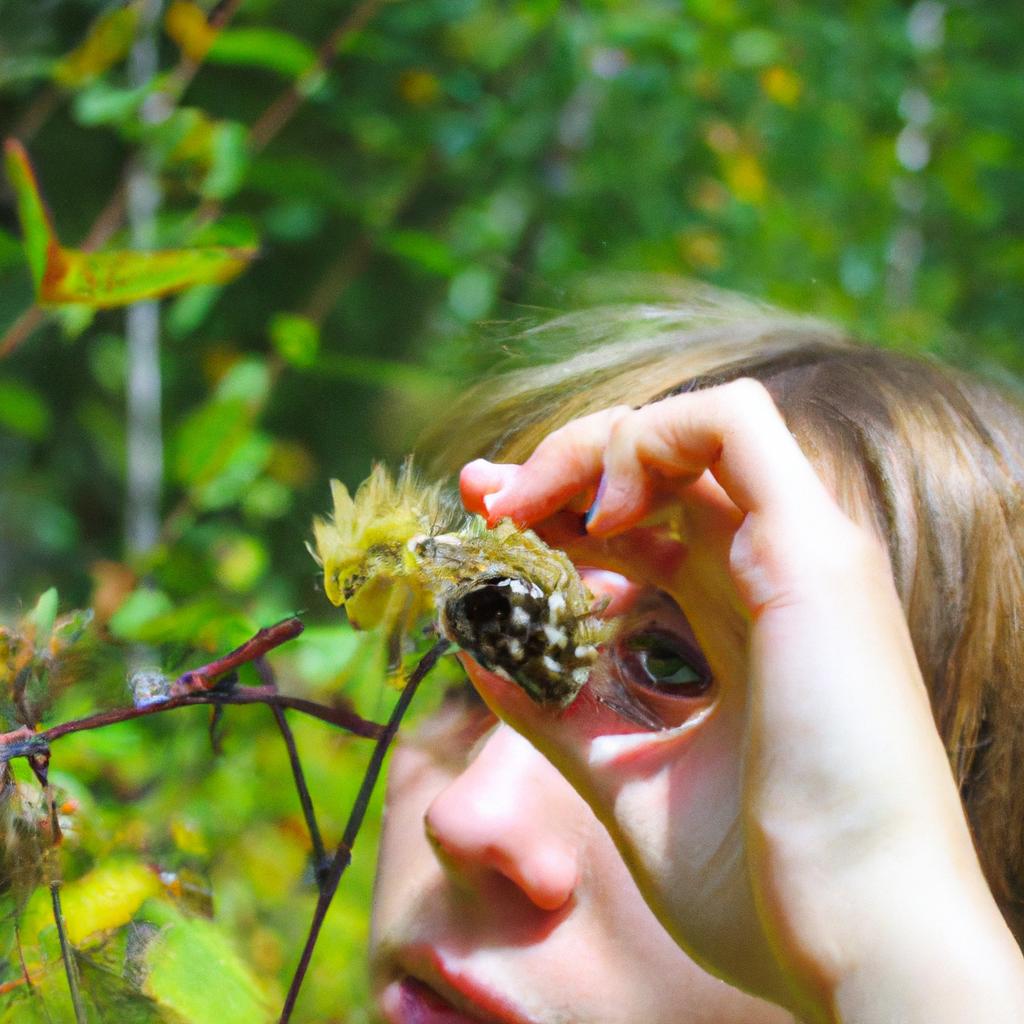The concept of an evolutionary arms race in the natural world is a fascinating and complex phenomenon that has captivated scientists for centuries. It refers to the continual cycle of adaptations and counter-adaptations between species as they compete for survival and reproductive success. This relentless struggle drives organisms to develop new traits, behaviors, or defenses in response to selective pressures exerted by their environment or other species.
One striking example of an evolutionary arms race can be observed in the relationship between predator and prey, such as the ongoing battle between cheetahs and gazelles on the African savannah. Cheetahs have evolved incredible speed over generations, enabling them to chase down swift prey like gazelles. In turn, gazelles have developed exceptional agility and quick reflexes to evade capture. This dynamic interaction highlights how each species continually adapts in order to outwit or outmaneuver its opponent, leading to an ever-increasing level of sophistication.
Understanding these intricate mechanisms of adaptation within an evolutionary arms race requires examining various factors such as genetic variation, ecological constraints, and environmental fluctuations. By delving into this subject matter, we gain valuable insights into the forces shaping biodiversity and driving evolution forward. Through studying case studies like the cheetah-gazelle scenario, we can also appreciate the delicate balance between predator and prey populations, as well as the potential for coevolutionary dynamics. This arms race not only shapes the physical attributes of these species but also influences their behaviors, communication strategies, and even their reproductive systems.
Additionally, studying evolutionary arms races can provide valuable information for conservation efforts. By understanding how species have adapted in response to selective pressures, scientists can better predict and mitigate potential negative impacts caused by human activities or environmental changes. This knowledge can help inform management practices aimed at preserving biodiversity and maintaining healthy ecosystems.
In summary, exploring the concept of an evolutionary arms race offers a fascinating glimpse into the intricate web of interactions that drive evolution in the natural world. It highlights the never-ending quest for survival and reproductive success and underscores the importance of adaptation in shaping the diversity of life on Earth.
Darwin’s Theory of Evolution
Evolution, as proposed by Charles Darwin in his groundbreaking book “On the Origin of Species,” is a fundamental concept in biology that explains how species change over time. At its core, evolution is driven by natural selection, a process that allows individuals with advantageous traits to survive and reproduce while those without such traits are less likely to pass on their genes.
One compelling example of evolution through natural selection can be observed in the adaptation of peppered moths (Biston betularia) during the Industrial Revolution in England. Prior to this period, most peppered moths had light-colored wings which provided camouflage against tree bark. However, with the increase in industrial pollution and subsequent darkening of tree trunks due to soot deposition, a new variant emerged with darker wings. These darker moths were better camouflaged against the newly altered environment, allowing them to evade predation more effectively. Consequently, over time, the population shifted towards predominantly dark-winged moths—an example illustrating how evolutionary processes can lead to substantial changes within a relatively short timeframe.
The theory of evolution encompasses several key principles:
- Variation: Within any given population, there exists genetic diversity resulting from random mutations or recombination events during reproduction.
- Heritability: Some variations are heritable and can be passed down from one generation to another.
- Selection pressure: Environmental factors exert selective pressures on organisms, favoring certain traits over others.
- Adaptation: Individuals possessing beneficial traits have higher chances of survival and reproductive success than those lacking these advantages.
| Key Principles |
|---|
| Variation |
These four interconnected concepts form the foundation for understanding how species adapt and evolve in response to changing environments. By exploring various mechanisms driving evolutionary change, scientists gain valuable insights into why certain species thrive while others struggle to survive.
Transitioning into the subsequent section on “Competition for Resources,” it becomes evident that evolution is not a solitary process driven solely by natural selection. Instead, it intertwines with other fundamental forces, shaping the intricate dynamics of life on Earth.
Now let us delve further into how competition among individuals for limited resources drives evolutionary processes and shapes the diversity we observe in nature.
Competition for Resources
Evolutionary Arms Race: Natural History Adaptation
This adaptation is particularly evident in the context of a competition for resources, where organisms undergo an evolutionary arms race to ensure their survival and reproductive success.
Consider the example of cheetahs and gazelles on the African savannah. Cheetahs are known for their incredible speed and agility, allowing them to chase down prey with remarkable precision. However, this exceptional hunting ability has also shaped the evolution of their primary prey – gazelles. Over generations, gazelles have developed long legs and powerful muscles that enable them to outrun potential predators like cheetahs. This ongoing battle between predator and prey acts as a driving force behind natural selection.
To further illustrate this concept, let us delve into some key aspects surrounding the evolutionary arms race:
-
Coevolution: In response to selective pressures exerted by predators or competitors, species often undergo coevolutionary changes. This refers to reciprocal adaptations between two or more interacting species. For instance, certain plants may develop toxins as a defense mechanism against herbivorous insects which then evolve countermeasures like detoxification enzymes or resistance mechanisms.
-
Genetic Variation: The existence of genetic variation within populations provides the raw material for natural selection to act upon. Individuals with advantageous traits have a higher likelihood of surviving and reproducing successfully compared to those without such traits. Consequently, beneficial genetic variations become more prevalent in subsequent generations.
-
Arms Race Dynamics: The evolutionary arms race involves a continuous cycle of adaptation and counter-adaptation between different species. As one organism evolves new traits or behaviors that improve its chances of survival or reproduction, others respond by developing strategies or characteristics that can outcompete these adaptations.
-
Escalating Complexity: Over time, interactions within an arms race can become increasingly complex. For instance, predators may evolve more sophisticated hunting techniques while prey species develop better camouflage or mimicry to avoid detection. These escalating adaptations contribute to the intricate web of interactions in ecosystems.
The evolutionary arms race is a fascinating phenomenon that highlights the dynamic nature of natural history adaptation. By understanding these mechanisms and their implications, we gain insights into how species have evolved to survive and thrive in diverse environments.
Transitioning into the subsequent section on “Predator-Prey Interactions,” it becomes apparent that predator-prey relationships are intricately intertwined with the evolutionary arms race. The dynamics between predators and their prey shape not only individual organisms but also entire ecosystems, leading to a delicate balance necessary for all life forms coexist successfully.
Predator-Prey Interactions
Evolutionary Arms Race: Natural History Adaptation
In the previous section, we explored how organisms engage in a relentless battle to secure limited resources. Now, let us delve deeper into this fascinating phenomenon and examine some specific examples that highlight the intensity of competition among species.
Consider the case of two bird species, Acanthiza pusilla and Acanthiza chrysorrhoa, both competing for nesting sites in an Australian woodland. These birds exhibit similar ecological niches and rely on tree hollows for breeding. As their populations grow, competition intensifies, leading to a remarkable adaptation observed in Acanthiza pusilla. This particular species has evolved a unique elongated beak that allows it to reach deep within narrow crevices where other birds cannot access. By exploiting this specialized feeding strategy, Acanthiza pusilla gains a competitive advantage over its counterpart when it comes to securing available nesting sites.
To further illustrate the consequences of resource competition, let us explore several key points:
- Increased population density can exacerbate competition as more individuals vie for limited resources.
- Interspecific competition occurs between different species, while intraspecific competition arises within the same species.
- Resource partitioning is one strategy used by competing species to reduce direct competition by utilizing distinct portions or types of shared resources.
- Competitive exclusion may occur when one species outcompetes another to the point of local extinction.
The table below summarizes these important concepts:
| Key Points | Definition |
|---|---|
| Increased population density | Higher numbers of individuals result in intensified competition due to greater demand for finite resources. |
| Interspecific competition | Competition occurring between different species vying for common resources such as food, water, or territory. |
| Intraspecific competition | Competition arising within members of the same species who require identical resources necessary for survival. |
| Resource partitioning | The division of resources among competing species to reduce direct competition and allow coexistence in the same habitat. |
These examples and key points shed light on the intricate dynamics of resource competition within ecosystems, emphasizing the significance of evolutionary adaptations as a means for survival.
Moving forward, we now shift our focus to another facet of the perpetual struggle for existence: predator-prey interactions. These relationships play a crucial role in shaping natural selection and are characterized by an intricately balanced dynamic between two opposing forces. By examining these interactions, we gain valuable insights into how species have evolved strategies to evade capture or secure their next meal.
Co-evolutionary Relationships
Evolutionary Arms Race: Natural History Adaptation
Predator-Prey Interactions have long been recognized as a key driving force in the evolutionary arms race, leading to remarkable adaptations and counter-adaptations in both predators and prey. This section will explore the intriguing co-evolutionary relationships that emerge between species engaged in this perpetual battle for survival.
To illustrate these dynamics, let us consider the example of cheetahs (Acinonyx jubatus) and gazelles (Gazella spp.). Cheetahs are renowned for their incredible speed, enabling them to pursue and capture swift-footed prey such as gazelles. However, over time, gazelles have evolved enhanced agility, making it increasingly challenging for cheetahs to secure a successful kill. In response, cheetahs have developed exceptional acceleration capabilities during short bursts of high-speed pursuit.
The predator-prey interactions observed between cheetahs and gazelles exemplify several fascinating aspects of co-evolution:
- Escalating traits: As one species evolves specific adaptations to become more efficient at capturing or evading its counterpart, the other species must respond with corresponding enhancements to survive.
- Frequency-dependent selection: The success of certain adaptations depends on their prevalence within a population relative to those possessed by potential predators or prey. For instance, if most gazelles possess superior agility, any slower individuals would be at a disadvantage due to an increased risk of predation.
- Fitness trade-offs: Engaging in an evolutionary arms race often involves compromising other aspects of fitness. Gazelles may allocate significant energy towards developing quick reflexes but sacrifice other physiological or reproductive traits.
- Geographic variation: Co-evolutionary dynamics can vary across different geographical regions depending on environmental factors and local selective pressures. Populations of cheetahs and gazelles inhabiting diverse ecosystems may exhibit distinct adaptive strategies.
Table 1 provides an overview of some notable predator-prey interactions and the co-evolutionary adaptations that have emerged as a result. These examples demonstrate the incredible diversity of strategies employed by organisms engaged in this perpetual arms race.
| Predator | Prey | Co-evolutionary Adaptation |
|---|---|---|
| Cheetahs | Gazelles | Enhanced speed and agility |
| Wolves | Deer | Increased stamina |
| Snakes | Rodents | Venomous bites |
As we delve deeper into understanding these co-evolutionary relationships, it becomes evident that they play an integral role in shaping biodiversity across ecosystems. The ongoing dance between predators and prey drives evolutionary change, leading to remarkable adaptations and counter-adaptations over time.
Transitioning smoothly into our next section on Genetic Variability, let us explore how genetic factors contribute to the ever-changing dynamics of the evolutionary arms race.
Genetic Variability
Evolutionary Arms Race: Natural History Adaptation
Co-evolutionary Relationships (Continued)
In the previous section, we explored the intricate web of co-evolutionary relationships that exist in nature. Now, let us delve deeper into this fascinating phenomenon by examining a real-life example – the relationship between predator and prey.
Consider the classic case study of the cheetah and the gazelle. Over time, these two species have engaged in an evolutionary arms race, each adapting and evolving to outwit and outrun the other. The cheetah has evolved incredible speed and agility, allowing it to chase down its prey with unparalleled precision. In response, gazelles have developed lightning-fast reflexes and exceptional leaping abilities to evade their swift pursuers.
This ongoing battle for survival is just one example of how co-evolution drives adaptation in natural history. It highlights several key aspects:
- Escalation: As predators become more efficient at capturing prey, their prey must evolve countermeasures to survive.
- Iterative process: Co-evolution occurs over generations as both species continuously adapt in response to changes in one another.
- Dynamic equilibrium: This perpetual struggle creates a delicate balance where neither species gains a long-term advantage.
- Genetic diversity: Variation within populations allows for some individuals to possess traits that better equip them against certain predation strategies.
To further illustrate this concept, consider Table 1 below, which showcases notable examples of co-evolving pairs across various ecosystems:
| Predators | Prey |
|---|---|
| Lions | Wildebeest |
| Hawks | Mice |
| Spiders | Flies |
| Orchids | Pollinators |
These examples demonstrate the wide-ranging effects of co-evolution on different organisms and highlight the complex interplay between them. From large mammals to tiny insects, no organism exists in isolation; they are all interconnected in the intricate tapestry of natural selection.
In the subsequent section, we will explore how these co-evolutionary relationships and other factors contribute to the selective pressures that shape the course of evolution. By understanding these mechanisms, we can gain deeper insights into the remarkable adaptations that have arisen throughout Earth’s history.
Selective Pressures (Continued)
Selective Pressures
Evolutionary Arms Race: Natural History Adaptation
Genetic Variability plays a crucial role in the ongoing evolutionary arms race between species. This section explores how selective pressures drive genetic variability, leading to adaptations that enhance survival and reproductive success.
One fascinating example of genetic variability is seen in the peppered moth (Biston betularia) population during the Industrial Revolution. Prior to this era, the majority of individuals had light-colored wings, camouflaging them against lichen-covered tree trunks. However, as industrial pollution darkened these trees with soot, darker variations of the moth began to thrive due to their increased camouflage ability on dirty backgrounds. Over time, there was a shift in allele frequencies favoring the dark-winged morphs—a classic case of natural selection at work.
Selective pressures contribute significantly to shaping genetic diversity within populations. These pressures can arise from various factors such as predation, competition for resources, or environmental changes. Factors like increased predation by a certain predator or limited food availability can lead to differential survival rates among individuals with different traits. As a result, advantageous traits become more prevalent over successive generations while disadvantageous ones decline.
The interaction between predators and prey provides an excellent illustration of how selective pressures influence genetic variation. Predators exert intense pressure on prey populations through hunting strategies and physical attributes that enable efficient capture. In response, prey species develop specific adaptations including enhanced speed or agility, protective coloration or mimicry, toxic defenses, or sophisticated behaviors such as group cooperation or deceptive tactics.
This dynamic interplay between organisms and their environment leads to an ever-evolving cycle known as coevolution—an ongoing battle where each party tries to outwit the other through perpetual adaptation and counter-adaptation. The following bullet point list highlights key aspects of this relentless struggle:
- Rapid evolution driven by selective pressures
- Genetic variations providing opportunities for adaptation
- Intense competition for resources promoting innovation
- Coevolutionary arms race shaping ecosystems and species interactions
To further illustrate the complex nature of this evolutionary process, consider the following table:
| Selective Pressure | Example Adaptation | Benefits |
|---|---|---|
| Predation | Camouflage | Increased survival rate |
| Competition | Enhanced foraging strategies | Access to limited resources |
| Environmental | Drought tolerance mechanisms | Persistence in harsh conditions |
| Mutualism | Pollination adaptations | Reproductive success |
This table showcases various selective pressures along with corresponding adaptive responses. It highlights how different organisms have evolved specific traits to effectively respond to their respective challenges.
In summary, genetic variability plays a significant role in the ongoing evolutionary arms race between species. Through selective pressures such as predation, competition, and environmental changes, advantageous traits become more prevalent over time while disadvantageous ones decline. The coevolutionary struggle between predators and prey exemplifies this dynamic interaction, showcasing how each party continuously adapts to gain an advantage. This perpetual cycle of adaptation and counter-adaptation shapes ecosystems and drives the fascinating diversity we observe in natural history.
References:
- Kettlewell HBD (1955). “Selection experiments on industrial melanism in the Lepidoptera”. Heredity.
- Grant B.S., Wiseman L.L. (2002). “Recent history of Melanism Evolution in peppered moths.” Retrieved from https://www.ncbi.nlm.nih.gov/pmc/articles/PMC1691097/.




